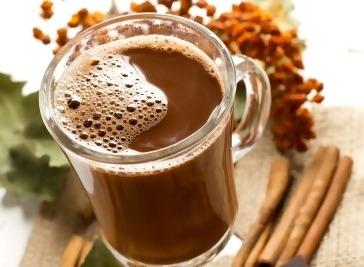
Sep 22 , 2019
0 Comments
Chocolate Tea: Nature’s Aphrodisiac
Theobroma cacao more popularly known as cocoa is a native to the Central and South American regions and was first brought to Jamaica by the Amerindians who were some of the earliest settlers on the island. The cocoa plant was used to make a drink in combination with red pepper by the Amerindians and was considered a delicacy. The cocoa plant is very diverse and can be used to make from mulch and animal feed to soft drinks and alcohol to jam, cocoa butter and marmalade and of course chocolate and it’s many byproducts. The plant can grow anywhere between 12 to 25 feet high with the fruit taking between 150-180 days to fully develop. It is commonly grown in abundance on farms, however small amounts of cocoa tree can be seen in isolation in and around the homes of several Jamaicans.
The benefits of this plant is far reaching as a study conducted by the Ball State University in Indiana and published by the Nutrients Journal in 2013 the has shown that the extracts from the cocoa plant fights against hypertension as well as aid in preventing cardiovascular diseases which would primarily affect the blood vessels (arteries, veins, resistant vessels) and the heart. Further studies by A. Scholey from the Swinburne University of Technology, Australia and L. Owen from the Keele University, UK has revealed that the continued intake of flavanols from cocoa extracts significantly improves one’s neurocognitive enhancements and supports one’s neuroprotective effects. This is particularly important since brain development is vital to every aspect of growth. To support the above research, the Mars Center for Cocoa Health Science has discovered that the consumption of cocoa promotes the production of nitric acid in the body which “triggers the muscles in the arterial wall to relax”, this then allows the easy flow of oxygen, nutrients and blood through the body.
A Jamaican all time favorite, the cocoa plant is used to make the chocolate tea which is considered a luxury in rural parishes and is considered a delicacy in the urban areas. The tea is a Sunday morning specialty or it is served at family gatherings any time of day or year. The chocolate tea is so loved; it is sometimes prepared as soon as individuals feel the urge to have any form of warm liquid to drink. The tea has a long standing tradition within the Jamaican society and it is said to have been prepared as far back as any living Jamaican can remember. So useful is the powder form the cocoa plant that it is used in making punches and in cakes as a flavoring ingredient.
To prepare the tea from scratch, the cocoa beans are dried and grinded to resemble dust like particles; this is then added to boiling water and is allowed to boil for approximately 3-5 minutes. However, before adding the cocoa powder to the water, the user must add spices such as cinnamon, salt, nutmeg and vanilla in splashes. It is then sweetened with a combination of condensed milk and sugar even though several drinkers prefer to use only condensed milk. The tea however is unsweetened for individuals who are diabetics.
In Jamaica, any large gatherings are certain to have chocolate tea being served as it would be very disappointing for attendees who traditionally show up to these events with the expectation of partaking in such tea. Chocolate tea is also considered an antidepressant by the locals and it is often drunk when there is a feeling of a high level of stress.
The widely know side effect of the cocoa plant and its byproducts is in relation to caffeine which is contained within the plant, therefore users who are allergic or show signs of allergy to caffeine may show such side effects if the chocolate tea or any other cocoa byproduct is consumed. The consumption of large amounts by children may lead to tics or restlessness and it may lead to enhancing migraine headaches.
~WilRica
